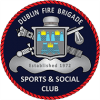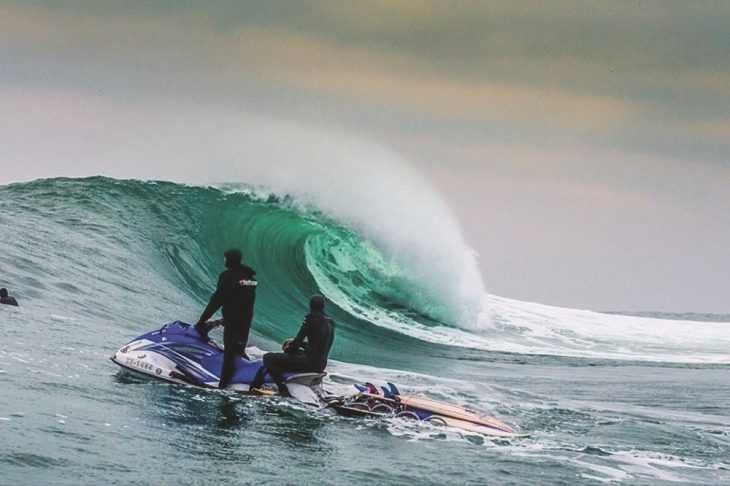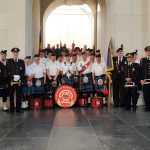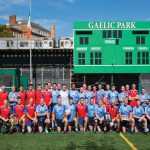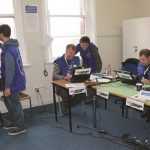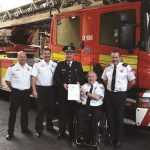The Irish Tow Surf Rescue Club is saving lives in the water and on the beaches along Ireland’s west coast. We speak with co-founder Peter Conroy to discover more.
Surfing isn’t just a sport for warm weather water, it’s a global passion. In fact, Ireland’s reputation as a surfing hotspot continues to grow, despite weather that is somewhat different to Australia or California – places like Lahinch, Bundoran and Tramore are all ports of call for surfers from Ireland and beyond. Though undoubtedly exhilarating, surfing can be also a dangerous sport. There’s a very real chance of drowning, of being overcome by waves that are stronger than they appear, of being caught in riptides or washing up on the rocks. However, if you get into difficulty on the west coast of Ireland, chances are you could be rescued by a Dublin Fire Brigade firefighter or one of his colleagues from the Irish Tow Surf Rescue Club.
The club was co-founded by Peter Conroy, a firefighter based in No 3, who joined the brigade in 2004 after completing a Master’s in International Disasters Engineering & Management from Coventry University. Water was always in his blood, growing up as a competitive swimmer and discovering the world of surfing while lifeguarding on the beaches of Clare. During his down-time, Peter would take a board and hit the waves around the Cliffs of Moher, quickly becoming hooked on the sport.
As the years went by he began tackling larger and larger waves, surfing both in summer and winter, and five years ago he was nominated for one of the top five biggest barrels (the hollow part of the wave when it is breaking) surfed in the world, representing Ireland at the XXL awards in LA. “It was the Oscars of surfing, featuring the best in the business,” Peter explains. “I had pictures on my wall of people who were over there, and I was in the same category as them!”
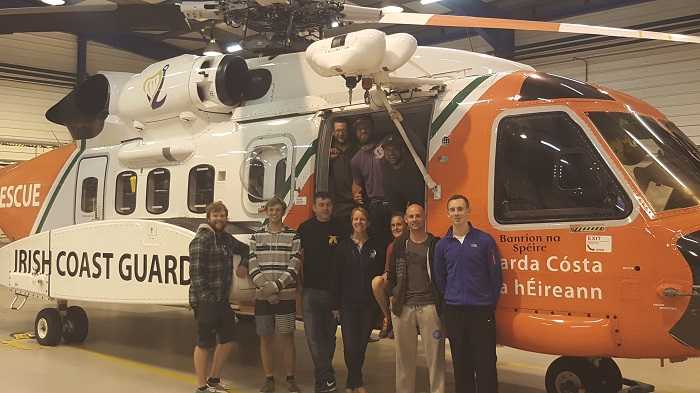
Club members with Coast Guard Rescue 115. Photo: Peter Conroy. Main image: Team members in the sea at the Cliffs of Moher, where some of the most dangerous rescues are carried out. Photo: Clem McInerney
Tow rescue
The Irish Tow Surf Rescue Club was born out of his love of surfing, founded in 2006 after Peter began tow-in surfing – surfers are towed into a breaking wave by a partner on a jet ski in order to catch higher and faster moving swells. Surfing one day beneath the Cliffs of Moher, Peter was trapped and was forced to swim through 20-foot waves to safety as the jet skis were unable to reach him. Relaxing in a pub afterwards, he and his friends realised that they should be able to rescue themselves, and others. A trainer from England was brought in to demonstrate the uses of the jet ski beyond its towing capabilities, and the group realised that the skis could be used for rescue purposes.
“With my degree and my work in the fire brigade, I started to implement more procedures that would allow us to be much safer out there on the water,” he says. “I broke my back a few years ago – we had a ski out there and the sled on the back could be used as a spinal board, so it’s very handy that way.”
From there the club’s reach began to expand, rescuing surfers in distress along the west coast and putting rescue boxes in place at the bottom of cliffs containing medical supplies, a VHF radio, survival suits and other useful items, ensuring that the team could access medical supplies in places unreachable by the skis. The group also began installing defibrillators in local hotels, which benefits both surfers or others in distress in the water or on the beaches, as well as the local community. They also coordinate with other voluntary emergency services like the Coast Guard, working where they cannot go or assisting rescues when required. Regular training exercises are carried out with the Coast Guard in Shannon, though the Club tries to involve the Coast Guard as little as possible, dealing with minor incidents on their own.
“We mainly concentrate on whitewater work, anything from the beach to 300 metres out, that’s our speciality. The Coast Guard isn’t allowed in there anymore – in the summertime there are lifeguards on the beach from 11am to 7am to deal with that area, but once you reach rocks and similar terrain there’s nobody really to cover it,” says Peter. “We’re trying to promote the Club in such a way that the Coast Guard can call on us as a speciality operator to implement rescues. They know we can do it, because they’ve called on us on occasion in the past.”
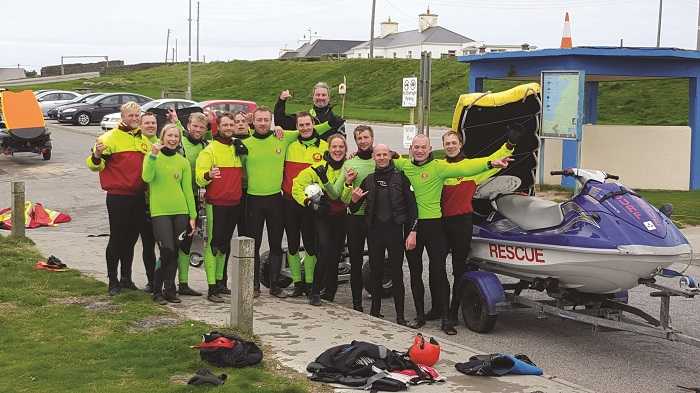
A training session with the Danish Lifeguard Federation on jet ski familiarisation. Photo: Peter Conroy
Developments
Looking ahead, Peter hopes that the club will continue to grow, welcoming new members alongside vital financial support to fund their operations, equipment and training. The club is now certifying people in Rescue Jetski Operations, a three-day course on Friday evening, Saturday and Sundays that trains competent rescue jet ski operators and swimmers.
“We’re pushing that more, and we’re also doing more with different organisations, like the Coast Guard helicopter,” says Peter. “We were down at the EMS Gathering in Kinsale [this year], working with them to demonstrate that the jet ski and the rescue sled on the back are the only thing that a water rescue needs, because it’s the only thing you can transport a spinal case on without compromising C spine. There is no way of putting a person with a spine injury onto a boat without comprising C spine, and if the helicopter comes they’ll winch with a broken back. We have a sled we can transport them on and bring them back to a harbour while keeping them secure.”
For more information on the rescue club or how to join, search for Irish Tow Surf Rescue Club on Facebook.
